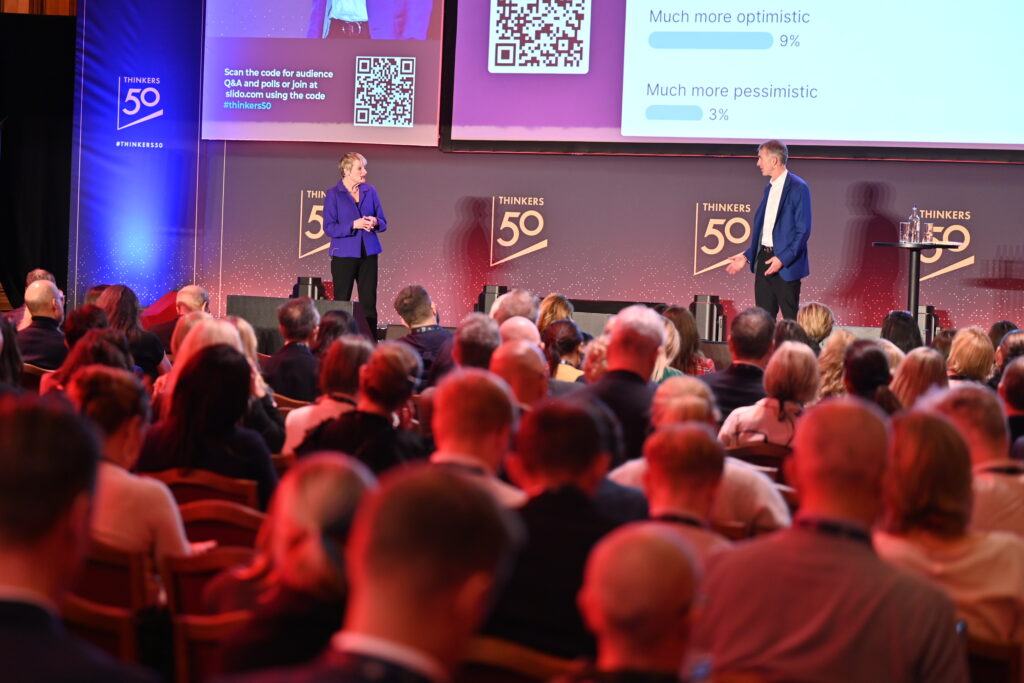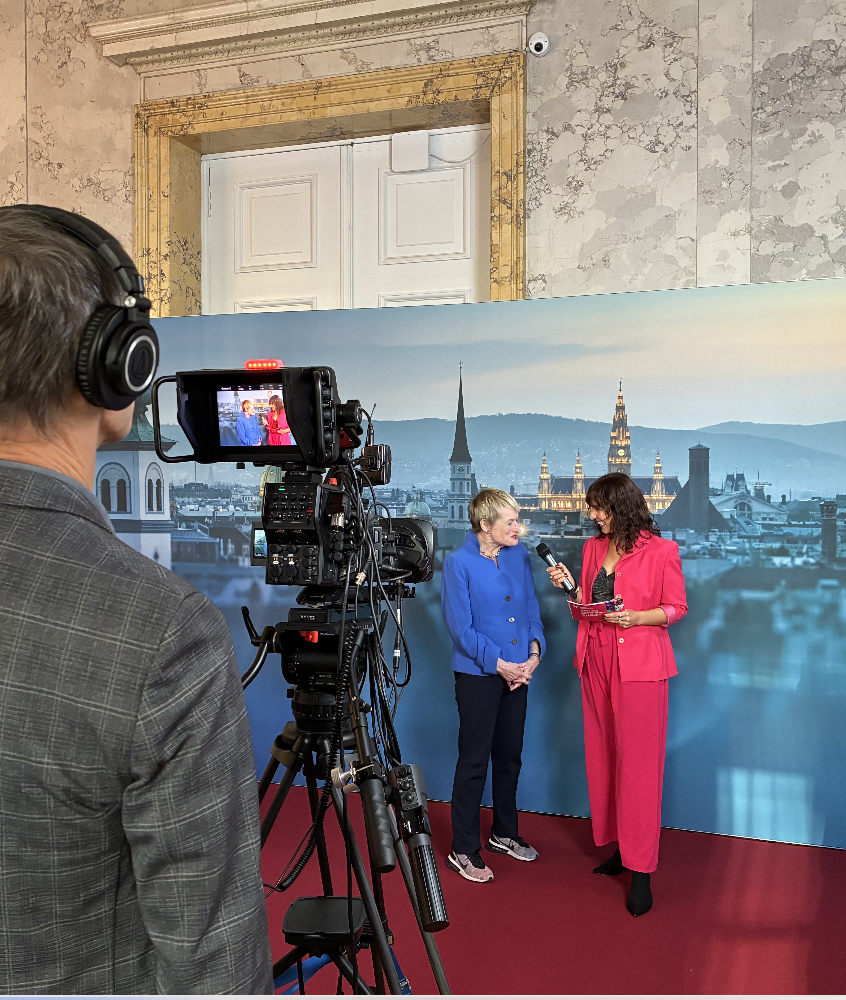It’s easy to forget that once upon a time, the modern shopping mall was considered revolutionary. All these fabulous stores in one place! A climate-controlled environment – no getting wet, freezing or panting in the heat! Plenty of free parking! A great place for teens to hang out with limited supervision! Today, they’re in retreat as we leave behind the car-dominated post-World War II golden age in search of something different – and more human.
The law of unintended consequences and the creation of the modern mall
Victor Gruen was a socialist, Austrian-Jewish architect who immigrated to the US in 1938. He designed the first-ever modern indoor mall, the Southdale Center, in Edina, Minnesota, which opened in 1956. Residents of Edina deal with snow and freezing temperatures in the winter and scorching heat in the summer. Strolling around without even needing a coat offered comfort, and the mall’s innovative two-story design was made effortless by the placement of modern escalators. Gruen’s original idea was that the mall would be a ready-made dense urban center like those he had left behind in Europe, and that medical centers, schools, and residences would grow up around it. It would be a semi-urban center without the “horrors” of squalid developments prevalent at the time – a planned, controlled, urban-like downtown.
The idea appealed to his backers, members of the Dayton family. They owned the ubiquitous Dayton’s department store, which by 1950 had reached $60 million in sales and was bursting at the seams in its downtown location (Fun fact: Dayton, later called Dayton-Hudson, rebranded as Target in 2000, ditching the family name altogether. But back to the main plot.)

The mall was a hit!
To Gruen’s dismay, his vision for the mall as an escape from the limited main streets and strip malls that were then American retail mainstays was hijacked. He saw it as the centerpiece for high-density living. The mall’s developers thought otherwise. As property values around the mall shot up, economics favored the construction of ever-more single-family, car-dependent homes.
The result as the Guardian observed “has since become an all-too-familiar sight across the US: a mall marooned in a sea of car parking, ringed by multi-lane roads and suburban sprawl. It was far from an inclusive vision, either. By proposing an idealized alternative to downtown – removed from actual downtown, shielded from the elements, only accessible by car and designed solely for shopping – Gruen had created a mechanism to protect white, middle-class homeowners from those unlike themselves.”
Malls decimated commercial life in cities and small towns. As Robert J. Gibbs, author of Principles of Urban Retail Planning and Development said, malls have been disastrous for the main streets and urban centers once found at the heart of local communities. “The first generation of malls built in the mid-1950s to mid-1960s devastated small towns. They pulled out the department stores from the city centers and shifted the center of commerce from downtown to the mall. Most of the downtowns then struggled for about 25 to 30 years. The effect was devastating.”
Design critic Alexandra Lange, author of Meet Me by the Fountain: An Inside History of the Mall summarizes the resulting mess: “Americans walk when they are in college or on vacation. The rest of the time, automobility rules.”
Dependence on cars further became taken-for-granted in the suburbs, for everything from sure, shopping, but for schools, children’s activities and even work in far-flung office parks. In every form — executive park, business park, corporate park, innovation park — the park was an essential part. “Pastoral capitalism,” the landscape architecture scholar Louise Mozingo has called it, naming the very American belief that office workers would do their best work if they could look out at manicured nature instead of the frenetic cityscape.

Gruen’s revenge? Rediscovering human spaces
Today, suburban office parks are lonely places, shunned by employers whose people are spread out all over the place and by the very people who once turned to them for peace and quiet and time to think. It turns out that actual homes are pretty good for that, as we learned during the pandemic! Collaboration, events, serendipitous encounters and access to amenities like local eateries are what now appeals to new, younger workers.
In a 1978 speech, Gruen made it clear he did not support the direction modern malls had taken. “I am often called the father of the shopping mall”, he said. “I would like to take this opportunity to disclaim paternity once and for all. I refuse to pay alimony to those bastard developments. They destroyed our cities.” A bit late for him, but not for the rest of us, transient advantage has come for the mall. E-commerce, the increased popularity of open-air stores where you could park right outside, and of course, the pandemic, all took their toll on a model that was already in decline. And of course, a lot of the mall-based retailers engaged in self-inflicted immolation. See: Circuit City fires experienced employees.
Perhaps the deepest irony is that the newly successful retailers today offer experiences that are an awful lot like the mom-and-pop stores of old. Neighborhood bookstores, and even Barnes & Noble, offer curation and community. Local boutiques provide personalized service and unique products. Farmers’ markets offer the promise of better health, community and a sense of place. Even large chains like Best Buy, Ulta Beauty and Sephora have learned that customers value connections and personal advice.
We seem now to have come full circle. As the era of the car, cheap petroleum and the glamour of a suburban life have faded, more urban, digital, green, connected, lifestyles are starting to look more attractive. Malls and suburban parks are being repurposed as places for people to connect. Churches, community centers and healthcare tenants have started to move in. Some properties are being turned into much-needed housing. Bowling and laser tag are attractions. Big box formats are being broken up into smaller, more intimate spaces.
To me, all of this is a harbinger for what we might find waiting for us in a new ‘golden age’ – one that is more human-centric, personalized and potentially connected – for all of us. New book on this to make an appearance in 2026!

October and November Events
The last month has been a whirlwind, including a “strategy world tour” of sorts – New York, South Carolina, London, Amsterdam, and Vienna!
Global Human Resources Leadership Experience
All the changes our world of work is experiencing – the AI revolution, 4 generations in the workforce, and the ongoing WFH/RTO debate – are being laid at the doorstep of HR. So what is the next generation of HR leaders to do?
My colleague and friend Dave Ulrich convened the first session of The Global Human Resources Leadership Experience (GHRLE) at the end of October, at the Darla Moore School of Business at USCC. It brought together senior HR leaders with a world-class advisory board of HR innovators. A special highlight was reconnecting with my co-author, Ram Charan, and gaining further insight into what HR leaders need in the current moment. Among the insights: now that you have a seat at the table, learn to communicate the way the “C” suite wants, with stories, numbers and a connection between the people in the company and the outcomes it’s trying to drive.
Thinkers50
The whole Rita McGrath Group team joined in the fun at the Thinkers50 London Summit + Gala. We gathered around the theme of” “regeneration” and discussions of what regenerative organizations, leadership structures, and growth look like. It’s been wonderful to see the growth of Thinkers50 over the past 2 decades to celebrate the best and brightest in management thinking.

Cobepulse
A brief stint in Amsterdam brought me to Cobepulse, a symposium by COBEPA. It’s an original investing firm, looking to see how its clients can drive growth, even in slow-growth economic environments. As several Board members told me, the decisions made by the firm are very lucky. As I mentioned to their leadership team, I bet the harder you work, the luckier you get!
The Global Peter Drucker Forum
The last-but-certainly-not-least stop on the mega tour was the Global Peter Drucker Forum, an annual event dedicated to continuing the thinking of the late management thinker. (Fun fact: when I was getting my PhD, I read his entire works for an assignment!) A major theme was the move away from command-and-control leadership to more permissionless organizational structures, that unleash human energy and creativity and speed things up, with examples from GE, Roche, Argenix, and Bayer.

In the news
The AI inflection point has landed on Hollywood’s doorstep in the form of AI “actor” Tilly Norwood. I discuss how the film industry missed the weak signals leading to now, for Fast Company.
CEO confidence is slipping, as concerns around cyber risks, AI, and geopolitical instability mount.
Thought Sparks Podcast
On the Thought Sparks Podcast this month, we welcomed Sabina Nawaz, author of “You’re the Boss” and expert in channeling pressure for more effective leadership; and Jean Oelwang, CEO of Virgin Unite, and author of “Partnering: Forge the Deep Connections That Make Great Things Happen”. New episodes of the Thought Sparks Podcast are released every Tuesday – stay tuned for releases this fall!
Thought Sparks Action Points
A new addition to the Thought Sparks suite are our Thought Sparks Action Points. These are bite-size insights from my conversations with thinkers and leaders on the Thought Sparks Podcast. New Action Points will be released alongside each new weekly episode. And we’ve gone ahead and created Action Points for some of our past guests that we saw at Thinkers50!
- Dorie Clark on career reinvention and long-term thinking.
- Herminia Ibarra on leadership transitions and the shift from “know-it-all” to “learn-it-all” cultures.
- Martin Reeves on how innovation works – not through heroic inventors but through serendipitous, collective processes involving forgotten contributors.
- Morra Aarons-Mele on the productive and destructive sides of anxiety, especially in modern work and leadership.
- Scott Anthony & Paul Cobban on how DBS Bank transformed from “damn bloody slow” to an innovation powerhouse by embedding innovation behaviors throughout the organization.
- Terence Mauri on transforming disruption into opportunity.
- Tomas Chamorro-Premuzic on how organizations prioritize confidence, charisma, and narcissism over competence, humility, and integrity – traits that predict effective leadership.
Upcoming Events
Columbia Executive Education
How do you drive innovation and growth? Leading Strategic Growth and Change, my Executive Education course at Columbia Business School, is designed to help executives spot new opportunities early, adapt strategy in real time, and guide their teams through complex transformations.
Join us for weeklong sessions running December 1-5, March 23-27, 2026 and June 15-19, 2026, on-campus in New York. Make sure you save your spot!
Thought Sparks Podcast
In the coming weeks, we’ll be welcoming some wonderful guests to the Thought Sparks Podcast. Ben Nelson is the founder & CEO of Minerva Project, which is revisiting everything we’ve historically assumed about higher education. Jaye Fenderson is the award-winning filmmaker behind the docuseries “The Class”, and Chesney Snow is a teaching artist at Princeton University’s Lewis Center for the Arts, and a groundbreaking beatboxer.
